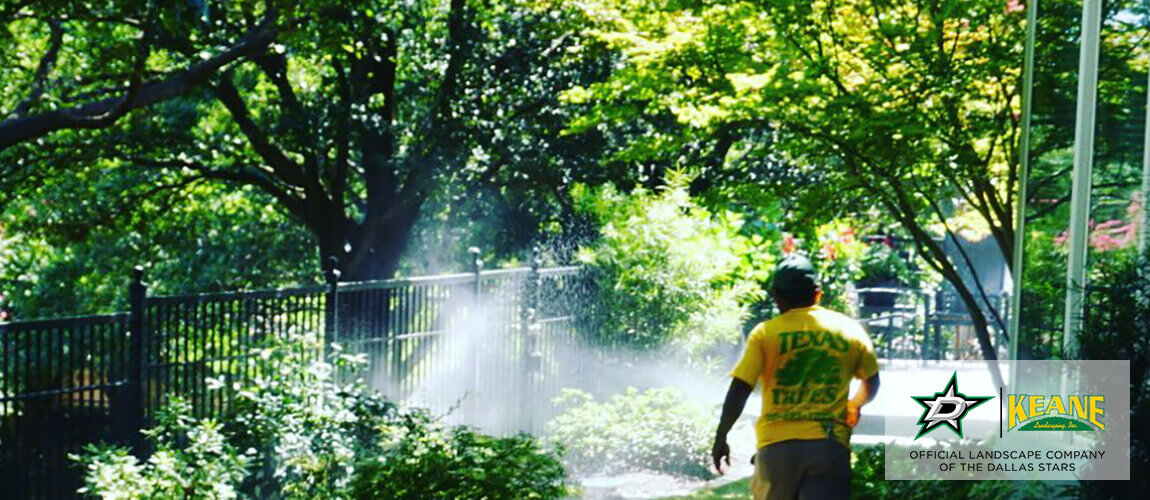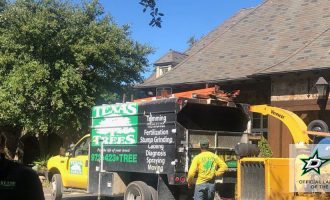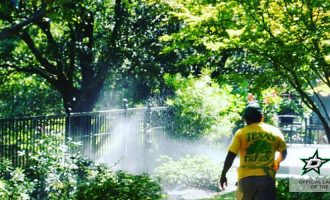However, trees are tremendous assets that provide our homes with beauty and shade.
However, winter storm-damaged trees are quite a dangerous liability. Winter, in particular, can prove to be quite the treacherous time, often wreaking havoc on our trees. Trees that may already be weakened by suffering from either disease or damage become that much more vulnerable to the sometimes overwhelming weight of the snow. Combine this with the extreme stress that heavy winds can create, and you have the conditions that ultimately lead to collapse.
While some of your trees may prove to be more vulnerable than others, the extreme winter elements provide high-risk conditions that can take their toll. This is why keeping an eye out for potential problems, and routine maintenance is crucial to prevent your trees from falling. Fall is the perfect time to start taking precautions that will ensure your tree won’t succumb to the hazardous conditions of winter storms. Take the necessary steps to make sure your trees are properly prepared for the winter season and don’t get turned as storm-damaged trees.
PROTECT TREES FROM BEING STORM DAMAGED TREES
To start things off, once you start to notice those leaves falling, then it is the perfect time to start looking to see if any of your trees have encroaching vines. Ivy and flowering plants such as clematis or honeysuckle have the potential to increase the danger to your trees come winter. Essentially what these vines tend to do is actually add to the amount of weight that is being supported by those dormant branches. So this ends up leading to an increased amount of trapped snow and ice build-up. All that extra weight becomes too much for the limbs to bear and leads to breakage. This is why cutting those vines down is important so that you can help to limit the risk to your trees.
Making sure your trees are adequately watered and fertilized throughout spring, summer, and fall can go a long way in terms of ensuring they are ready to take on the winter. For instance, mulching helps to protect roots in freezing weather. A routine of pruning dead branches in addition to new growth will help to ensure that your trees thrive.
Preventative Pruning
Any structural defects, whether they be dead wood, dead branches, decay or even substantial cracks, prove to be at a much higher risk for storm damage. For instance, deadwood can easily break off, so it is important to properly trim dead or dying branches in order to protect the tree and your property effectively. That’s why preventative pruning before storms is a significant step to take that goes a long way in preventing damage to homes, power lines, cars, or anything that gets in the way of falling branches. Moving dead or flimsy branches before a storm will ensure they won’t be blown around, causing potential damage during storms.
Trees are some of the most important features when it comes to improving the appearance of your yard. However, in order to continue enjoying their presence, taking the proper preventative measures, especially in harsh weather conditions, will help avoid unnecessary damage to your trees, property, and home. All it takes is an adequate amount of care and planning for your trees to thrive year-round.
Fall Yard Cleanup
Yard cleanup is a crucial part of the fall season that goes way beyond the simple task of just removing leaves from your lawn. There are many important aspects to consider when it comes to your yard that you will want to handle properly to ensure your property is well prepared for the cold stormy winter weather that is soon approaching. Taking the preventative measures needed can prevent potential issues not only in the winter but in the spring as well.
Gutter Cleaning
People often overlook all the issues that can occur from clogged gutters. Fall is the time to clean all those dead leaves that are clogging your gutters. Clogged gutters allow water to build up and freeze during winter which in turn makes your gutters more vulnerable to water damage. That can lead to damage to your roof, foundation, and brackets. It is definitely worth the time and expense to protect your gutters from the upcoming winter.
Tree Pruning
Fall is the perfect time to get rid of all those dead tree branches. This is particularly true of any trees that might be close to your house, as they present the risk for the biggest potential problems. Winter storms can bring those branches down on your roof. So removing them is the best way to prevent any damage. Any kind of large cracks in your trees is also something that needs to be carefully inspected. Cracked branches often require trimming.
A tree hollowed out from decay can also be hazardous if not properly treated. Speaking to a certified abortionist or getting an evaluation of your property to better determine if your trees could prove to be hazardous in the event of a storm can help you prevent any potential long term damage to your home and property.
Lawn Care
The cooling temperatures outside mean that the growth of your lawn is starting to slow down. This means that essentially, only a few more cuts are needed before the first frost. Fall is also the perfect time to feed your lawn, allowing it to come back healthy in the spring. Dethatching your lawn is also in your best interest as it removes all the dead grass and roots that won’t decompose during winter, which will allow water to more easily penetrate. Fall is also a really great time and opportunity to re-seed and repair all those sparse patches in your lawn.
Leaf Raking
Raking is perhaps the most classic of the Fall cleanup tasks. Focus on removing leaves from pathways, driveways and any other high-traffic areas around your property. Regular raking of these areas helps to prevent any accidents like slipping and falling. However, to save time, you might hold off and wait until the majority of the leaves have fallen. Because the rest of your yard is concerned.









